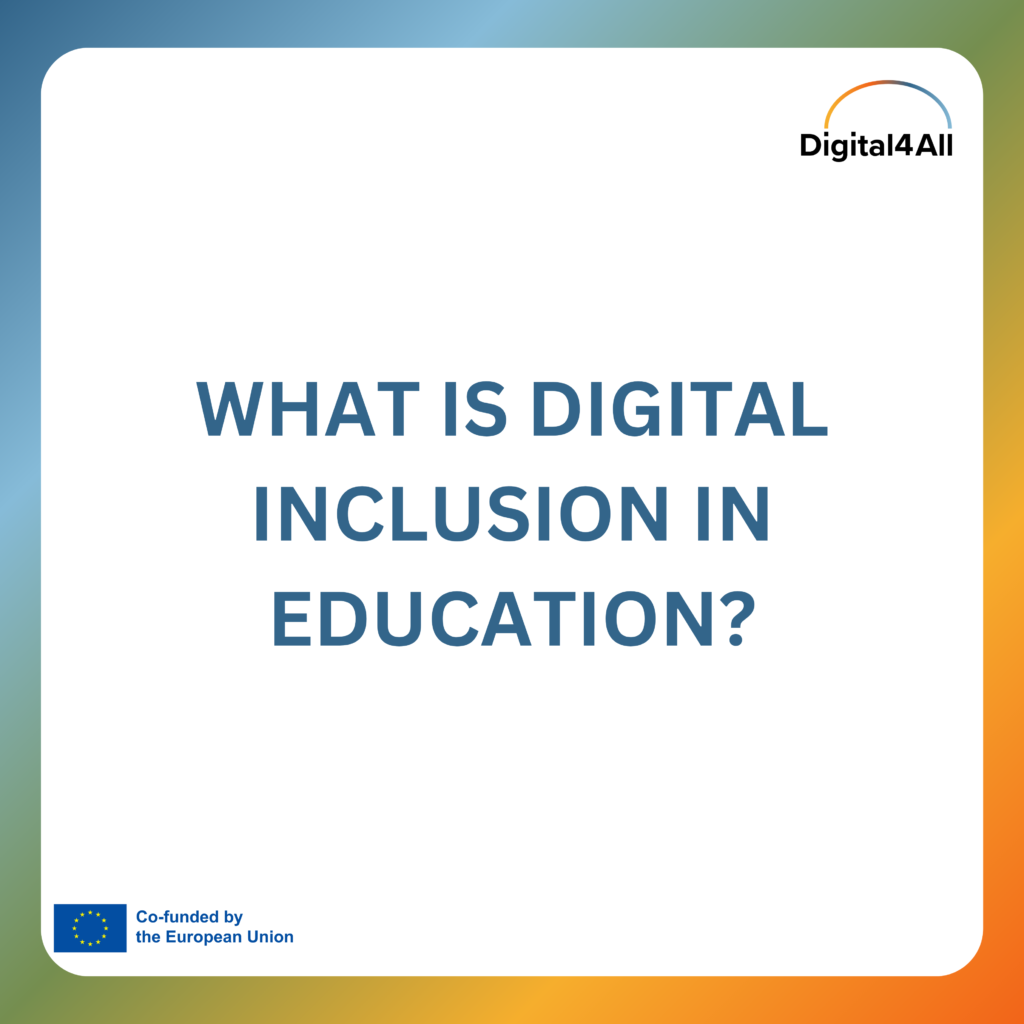Digital inclusion in education

In recent years, higher education in Europe has undergone a significant transformation with the widespread adoption of digital teaching practices. This shift has brought many benefits, allowing for greater flexibility, connectivity, and access to a wealth of educational resources.
However, as digital teaching becomes more mainstream, it has also highlighted persistent inequalities. For instance, students with different disabilities, low socio-economic status or students from marginalised groups have a higher risk of facing inequalities in digital teaching and learning. (OECD, 2023)
So, what is digital inclusion in education?
Digital inclusion in education focuses on overcoming barriers to participation in digital learning environments based on student differences. It emphasises the need to ensure that digital tools used in education are not only accessible but also designed in a way that promotes the active participation and inclusion of all learners. By embracing digital inclusion, higher education institutions can create a more equitable and supportive learning environment for all students.
Efforts to promote digital inclusion involve adapting teaching practices, curriculum design, and technological tools to cater to the diverse needs of students. This may include providing alternative formats for digital content, ensuring compatibility with assistive technologies, and offering personalised support to students with varying learning requirements.
By prioritising digital inclusion in higher education, institutions can empower students from all backgrounds to fully engage with digital learning opportunities and succeed academically.
In conclusion, while digital teaching has become a cornerstone of higher education, it is essential to recognise and address the inequalities that persist in digital teaching and learning. Embracing digital inclusion is crucial in ensuring that all students have equal opportunities to thrive in the digital age. By fostering inclusivity and accessibility, higher education institutions can create enriching learning experiences that benefit every learner, regardless of their background or circumstances.
